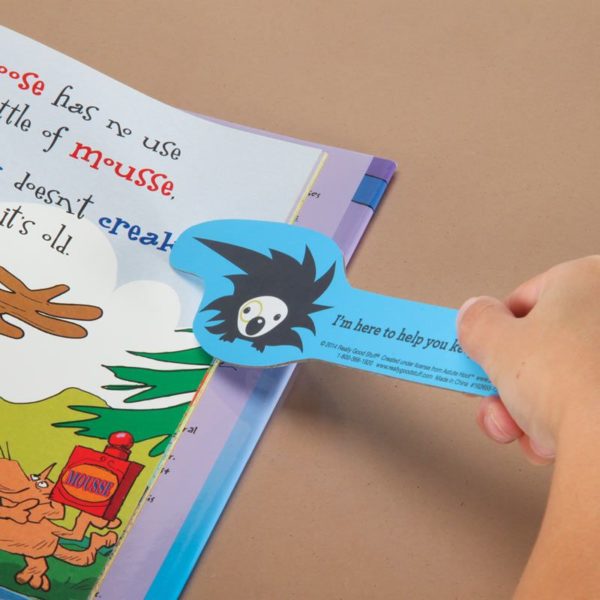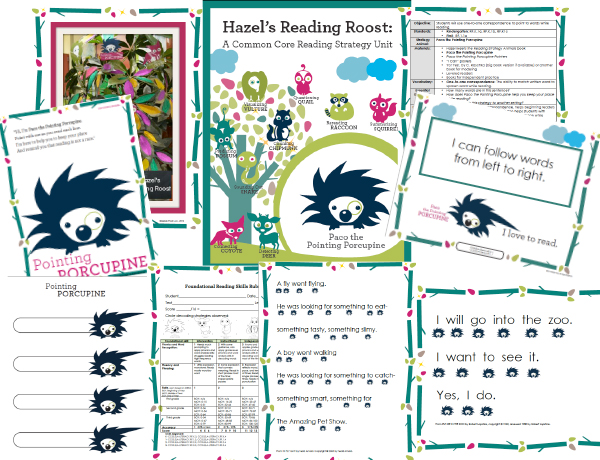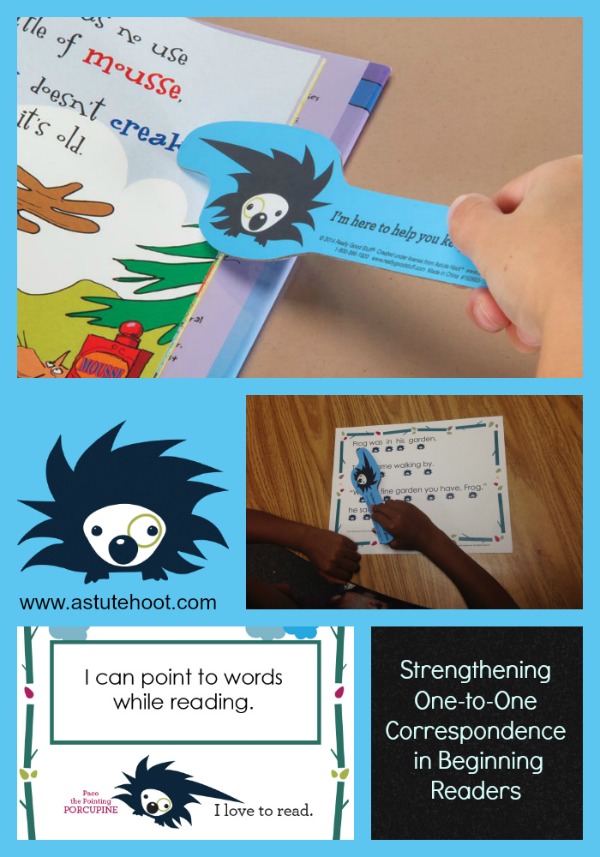Strengthening One-to-One Correspondence in Beginning Readers
“Hi, I’m Paco the Pointing Porcupine.
Point with me as you read each line.
I’m here to help you to keep your place
And remind you that reading is not a race.”

Paco the Pointing Porcupine is one our decoding strategy animals in Hazel’s Reading Roost. Paco encourages beginning readers students to use one-to-one correspondence. Read more about Paco’s strategy below…
WHAT is pointing? Pointing is a strategy that promotes one-to-one-correspondence, which refers to the ability to match written word to spoken word while reading.
WHY is pointing important? Pointing, or one-to-one correspondence, helps beginning readers make text-to-word connections. This also helps students with directionality, visual tracking and keeping their place while reading.
HOW do I teach pointing? Explain that Paco helps readers point to individual words while reading aloud to help make text-to-word connections. Model both good examples and non-examples of this strategy. Encourage students to chorally read aloud as you point to each word using the Paco Pointing Porcupine Pointer. Practice this together until students understand how the pointers work.
Watch this video to see how to teach one-to-one correspondence and directionality.
WHEN should I use pointing?
Explicit reading strategy instruction should be included in a balanced literacy program. Paco the Pointing Porcupine can be incorporated into various components of literacy lessons. Here are some specific examples of when to use Paco:
- Pointing Practice: When first introducing the pointing strategy, use the Pointing Practice Pages, which include sentences pulled from books on CCSS Exemplar Text List. The sentences have visual cues beneath each word to guide students as they point to each word using the pointers or their fingers.
- Guided Reading: Introduce or review the strategy by reading the Paco Pointing Porcupine Poem. Read aloud your selected guided reading text and model using the Paco Pointing Porcupine Pointer to point to each word as it is read. Distribute text and pointers to each student. Call on individual students to use the pointers as they read aloud.
As an extension, have students use the pointers to identify key vocabulary or sight words. Paco’s Pointers can also be used to make connections between text and illustrations and to demonstrate understanding of the organization and basic features of print (e.g., first word, capitalization, ending punctuation). In addition, pointers can be used to cite textual evidence when answering text-dependent questions. Encourage students to use Paco the Pointing Porcupine’s strategy when they are reading independently as well.
- Pointing Porcupine Reading Center: Create a portable reading center: Place a pointer and a book or text at students’ independent reading level in a large manila envelope with a copy of the Paco Pointing Porcupine Poem glued onto the front. Instruct students that during center time they are to take an envelope to their desks and use the pointer to practice keeping their place while reading and making text to word connections. Create several portable Pointing Porcupine reading centers using a variety of leveled texts.
- Independent Practice: Have the pointers available for student use during independent reading time. This promotes transfer of reading strategies and self-correction techniques while helping students stay focused on the text.
Helpful hint:
- Create a class set of Paco Pointing Porcupine Pointers. Print pointers onto cardstock and laminate. Distribute to class and model how to point to words while reading aloud. These pointers can keep students actively engaged during choral reading, independent reading and small group. Sturdy pre-made pointers are also available from Really Good Stuff here.

Paco’s unit is perfect for general education, special education, RTI and reading intervention. Download the complete unit here.


